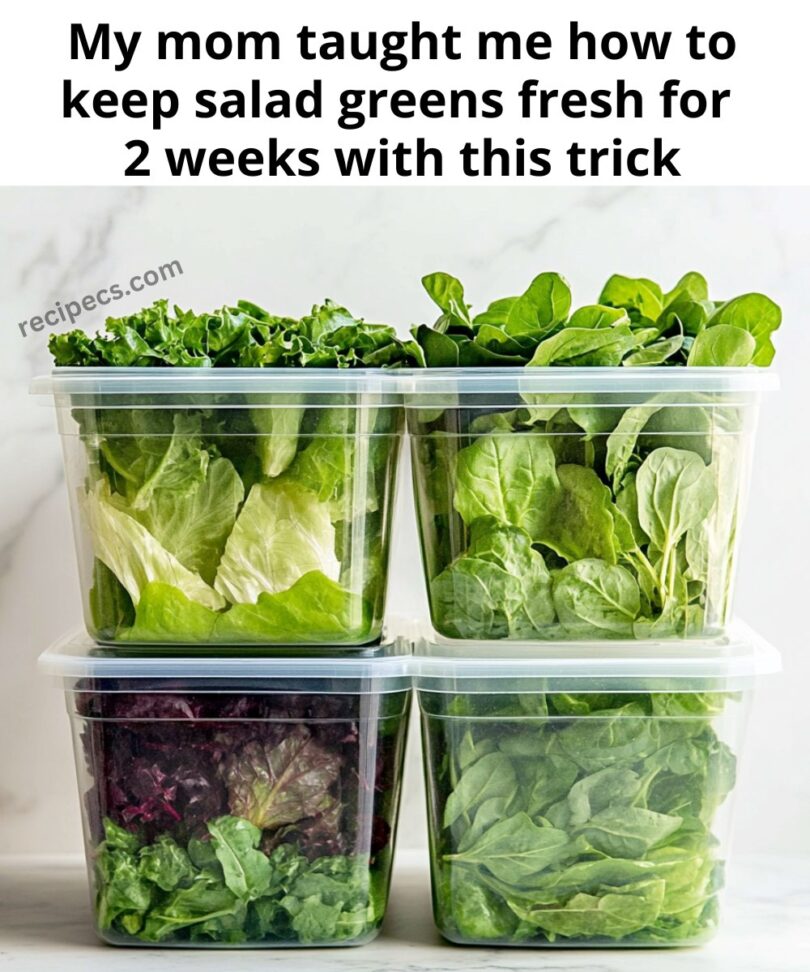ADVERTISEMENT
**You Can Extend the Shelf Life of Salad Greens! Here’s the Best Way to Do It**
Salad greens are a fresh, healthy staple in many households, but they often have a frustratingly short shelf life. Whether you buy pre-washed mixed greens or a bunch of fresh lettuce from the store, you may find yourself throwing out soggy, wilted leaves within just a few days. But don’t worry—there’s a simple and effective way to extend the shelf life of your salad greens so they stay fresh and crisp for much longer. With a few easy steps and some basic storage techniques, you can keep your salad greens in prime condition for a week or more.
### Why Salad Greens Spoil So Quickly
Before we dive into the solution, let’s take a look at why salad greens spoil so quickly in the first place. Fresh greens are high in water content, which makes them very prone to wilting, sliminess, and mold if not stored properly. Factors such as moisture, improper temperature, and air exposure contribute to their rapid deterioration. But with the right technique, you can preserve their freshness and enjoy crispy, vibrant greens throughout the week.
### The Best Way to Extend the Shelf Life of Salad Greens
Follow these simple steps to extend the life of your salad greens and keep them fresh for up to a week or more:
#### Step 1: Wash and Dry Your Greens Properly
Washing your salad greens is important, especially if they’re not pre-washed. However, washing them improperly can introduce excess moisture, which leads to wilting and mold growth. Here’s how to do it right:
– **Use cold water**: Rinse your greens thoroughly in cold water to remove any dirt, pesticides, or residue.
– **Dry thoroughly**: The key to keeping your greens fresh is drying them completely. Use a salad spinner to remove excess water, or pat them dry gently with a clean kitchen towel or paper towels. The less moisture, the longer your greens will last.
#### Step 2: Use Paper Towels to Absorb Excess Moisture
After washing and drying your greens, place them in a storage container lined with clean paper towels. The paper towels will absorb any remaining moisture, which helps prevent the greens from becoming soggy or slimy. If you’re using a bag, wrap the paper towels around the greens before sealing them in the bag. This simple step is one of the most effective ways to extend shelf life.
#### Step 3: Store in an Airtight Container or Resealable Bag
To further protect your greens, store them in an airtight container or a resealable plastic bag. If you’re using a bag, leave a small opening to allow for airflow. If you opt for a container, make sure it’s not too tight, as salad greens need some air circulation to stay crisp.
– **For containers**: Choose a container that is large enough to allow some room for the greens to breathe. Consider using a storage container with a vented lid or one designed for produce, as it will allow the right amount of airflow.
– **For bags**: A gallon-size resealable bag works well for storing large quantities of salad greens. Squeeze out excess air to avoid wilting but don’t seal it too tightly.
#### Step 4: Store in the Fridge’s Crisper Drawer
The crisper drawer in your refrigerator is designed to maintain the optimal humidity for produce, making it the perfect place for your salad greens. Store your greens here to keep them cool and fresh. Be sure to keep the temperature of your fridge at around 35-40°F (1-4°C) to help extend freshness.
#### Step 5: Check Regularly and Remove Wilted or Damaged Leaves
Even with the best storage techniques, some leaves may spoil faster than others. It’s important to check your salad greens every couple of days and remove any leaves that are wilting, slimy, or turning brown. This helps prevent mold from spreading and keeps the rest of the greens fresh for longer.
For Complete Cooking STEPS Please Head On Over To Next Page Or Open button (>) and don’t forget to SHARE with your Facebook friends
ADVERTISEMENT
